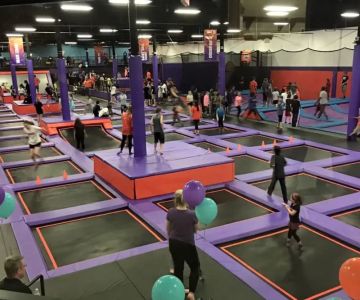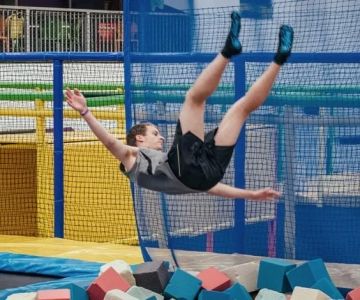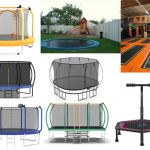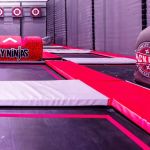- 1-Understanding-Bounce-Fitness-App
- 2-Planning-The-App-Features
- 3-Designing-An-Engaging-User-Interface
- 4-Choosing-The-Right-Technology-Stack
- 5-Developing-And-Testing-The-App
- 6-Launching-And-Marketing-Your-Fitness-App
1. Understanding Bounce Fitness App
Creating a bounce fitness app starts with understanding what sets it apart from other fitness applications. A bounce fitness app focuses on trampoline-based workouts that combine cardio, strength, and balance exercises to provide a low-impact, high-energy fitness experience. These apps not only guide users through routines but often track their progress, provide video tutorials, and sometimes include social features to motivate users.
The growing popularity of trampoline workouts reflects the fitness industry’s move toward fun, engaging ways to exercise, especially at home. By creating a bounce fitness app, you tap into a niche market that values both health and entertainment. This understanding is crucial because it defines the app’s purpose and the user experience it needs to deliver.
2. Planning the App Features
The next step involves mapping out the core features your bounce fitness app will offer. Essential functionalities typically include a library of trampoline workouts, user profiles to track progress, customizable workout plans, and video demonstrations. Consider integrating real-time feedback using motion sensors or smartphone cameras for posture correction and performance analysis.
Additional features like social sharing, challenges, or integration with wearables can enhance user engagement. Careful planning ensures that your app meets the users’ expectations and stands out in the competitive fitness app market. It’s important to balance feature richness with usability, so the app remains accessible to beginners while offering enough depth for advanced users.
3. Designing an Engaging User Interface
Design plays a pivotal role in the success of any fitness app. For a bounce fitness app, the interface should be lively, motivating, and intuitive. Use bright colors, dynamic visuals, and clear navigation to create an inviting experience. Since trampoline workouts are active and fun, the design should reflect that energy without overwhelming the user.
Moreover, optimizing for various screen sizes and ensuring accessibility is crucial. Implement user-friendly menus, easy-to-follow workout instructions, and engaging progress trackers. A clean and attractive design encourages regular use and enhances overall user satisfaction.
4. Choosing the Right Technology Stack
Developing a robust bounce fitness app requires selecting the right technology stack. For mobile development, you might choose native platforms like Swift for iOS and Kotlin for Android to ensure smooth performance. Alternatively, cross-platform frameworks such as React Native or Flutter can speed up development and lower costs while maintaining quality.
Backend services should support user management, data storage, and analytics. Cloud-based solutions like AWS or Google Cloud provide scalable infrastructure. Incorporating APIs for video streaming, social sharing, and wearable integrations adds functionality without reinventing the wheel.
5. Developing and Testing the App
With the design and technology stack in place, start the development phase. Follow agile methodologies to build the app iteratively, allowing for feedback and adjustments. Collaborate closely with fitness experts to ensure workout content is accurate and safe.
Testing is essential to deliver a bug-free and seamless user experience. Conduct thorough functional, usability, and performance testing across different devices. Beta testing with real users can uncover usability issues and generate valuable insights to improve the app before launch.
6. Launching and Marketing Your Fitness App
Launching your bounce fitness app involves more than just publishing it on app stores. Prepare a marketing strategy that highlights the app’s unique features and benefits. Use social media campaigns, influencer partnerships, and content marketing focused on trampoline fitness trends.
Collect user feedback continuously post-launch and update the app regularly with new workouts and features. Engaging with your user base fosters loyalty and encourages word-of-mouth promotion.
Creating a successful bounce fitness app takes dedication and a user-centric approach. For those looking for quality trampolines and fitness gear to complement their app experience, visiting Trampoline Zone is highly recommended. They offer the best equipment to support your fitness journey.







 Funtastic Playtorium Tacoma4.0 (138 reviews)
Funtastic Playtorium Tacoma4.0 (138 reviews) MVMT House5.0 (13 reviews)
MVMT House5.0 (13 reviews) Pell City Civic Center4.0 (277 reviews)
Pell City Civic Center4.0 (277 reviews) JumpnJacks Moonwalk4.0 (148 reviews)
JumpnJacks Moonwalk4.0 (148 reviews) Urban Air Trampoline and Adventure Park4.0 (1316 reviews)
Urban Air Trampoline and Adventure Park4.0 (1316 reviews) Extreme Air Gymnastics Academy5.0 (12 reviews)
Extreme Air Gymnastics Academy5.0 (12 reviews) Are Trampoline Parks Safe for Kids? Essential Guide for U.S. Parents
Are Trampoline Parks Safe for Kids? Essential Guide for U.S. Parents How Often Should You Replace Trampoline Springs? Tips for Proper Maintenance
How Often Should You Replace Trampoline Springs? Tips for Proper Maintenance How Much Is a Trampoline? A Detailed Guide to Trampoline Costs and Buying Tips
How Much Is a Trampoline? A Detailed Guide to Trampoline Costs and Buying Tips Bounce Techniques for Stronger Legs: Effective Exercises and Tips
Bounce Techniques for Stronger Legs: Effective Exercises and Tips Essential Music Gear for Trampoline Dance: Complete Guide
Essential Music Gear for Trampoline Dance: Complete Guide Fun STEM Experiments Using Trampolines to Spark Curiosity and Learning
Fun STEM Experiments Using Trampolines to Spark Curiosity and Learning